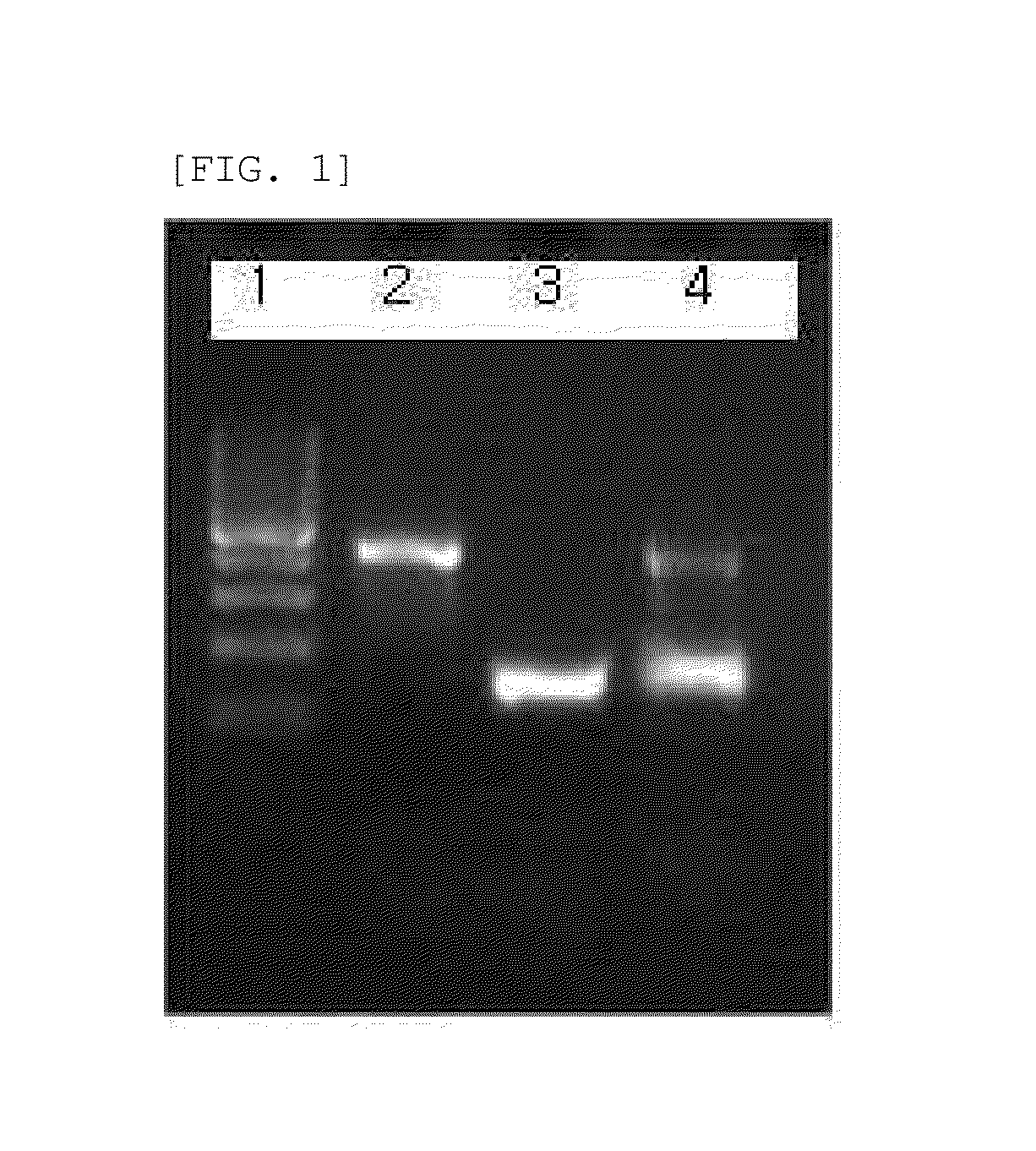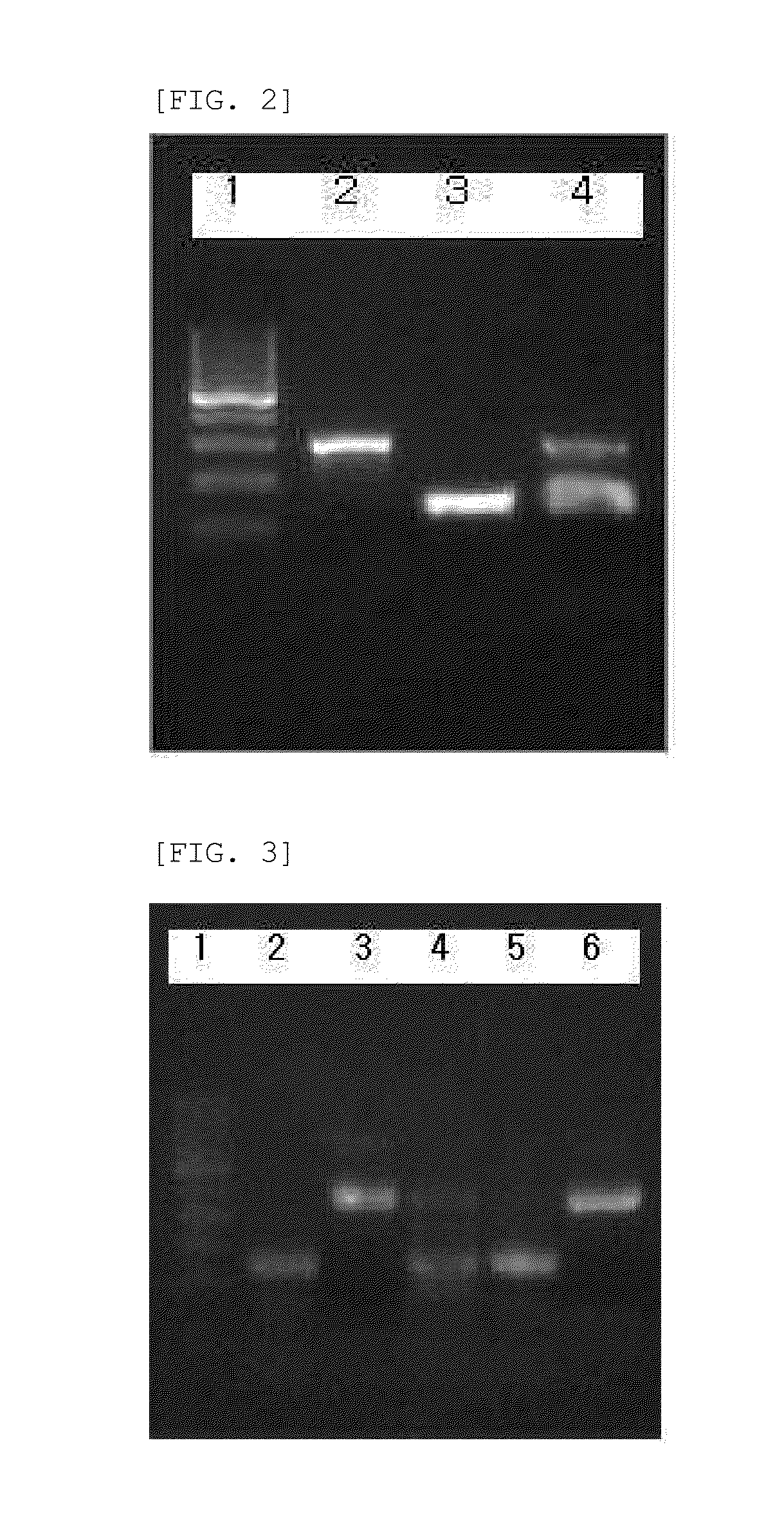Method for detecting mycobacterium tuberculosis and nontuberculous mycobacteria using duplex polymerase chain reaction
- Summary
- Abstract
- Description
- Claims
- Application Information
AI Technical Summary
Benefits of technology
Problems solved by technology
Method used
Image
Examples
example 1
Separation and Detection of Mycobacterium tuberculosis Complex and Nontuberculous Mycobacteria 1
[0048]1. Detection Target and Primer Design
[0049]Target genes to be detected were the IS6110 gene for Mycobacterium tuberculosis complex, and the 16S rRNA gene for nontuberculous mycobacteria.
[0050]A universal primer was used as a forward primer to amplify the 16S rRNA gene of mycobacteria. NTM-1 and NTM-2, which are characteristic of nontuberculous mycobacteria, were used as reverse primers. These primers useful in the detection of target genes were designed using the Primer3 program.
[0051](1) Mycobacterium Tuberculosis Complex (MTC)
[0052]1) target gene: IS6110
[0053]2) primers
a. forward primer:(SEQ ID NO: 1)5′-cgaactcaaggagcacatca-3′b. reverse primer:(SEQ ID NO: 2)5′-gtcgaggaccatggaggtg-3′
[0054]3) PCR product size: 385 bp
[0055](2) Nontuberculous Mycobacteria (NTM)
[0056]1) target gene: 16S rRNA
[0057]2) primers
a. forward primer:(SEQ ID NO: 3)5′-gtggcgaacgggtgagtaa-3′b. reverse primerNTM-1:...
example 1-1
Duplex PCR Using the Nucleotide Sequence of SEQ ID NO: 4 as a Reverse Primer NTM-1 for the Detection of NTM
[0059](1) Isolation of DNA
[0060]Mycobacterium tuberculosis ATCC 25177 and Mycobacterium abscessus ATCC 19977 were grown in an exclusive MGIT mycobacteria growth medium using the automated mycobacterial growth system BACTEC MGIT 960 (Becton, Dickinson and Company, Maryland, USA). Of the MGIT broth in which mycobacteria had been cultured, 500 pL was transferred into a 1.5 mL tube, and centrifuged at 14,000 rpm for 5 min. The supernatant was removed, and the pellet was dissolved in 300 μL of sterile distilled water and heated for 10 min in a boiling water bath. Following centrifugation at 14,000 rpm for 5 min, the supernatant was used as a template in PCR. As a combined species of MTC and NTM, a mixture of Mycobacterium tuberculosis ATCC 25177 and Mycobacterium abscessus ATCC 19977 was used.
[0061](2) Duplex PCR
[0062]Using GeneAmp PCR system 9700 (Applied Biosystems, Foster City, C...
example 1-2
Duplex PCR Using the Nucleotide Sequence of SEQ ID NO: 5 as the Reverse Primer NTM-1 for the Detection of NTM
[0063]Duplex PCR was carried out in the same manner as in Example 1-1, with the exception that the nucleotide sequence of SEQ ID NO: 5 was used as the reverse primer NTM-1.
PUM
| Property | Measurement | Unit |
|---|---|---|
| Electrical conductance | aaaaa | aaaaa |
Abstract
Description
Claims
Application Information
 Login to View More
Login to View More - R&D
- Intellectual Property
- Life Sciences
- Materials
- Tech Scout
- Unparalleled Data Quality
- Higher Quality Content
- 60% Fewer Hallucinations
Browse by: Latest US Patents, China's latest patents, Technical Efficacy Thesaurus, Application Domain, Technology Topic, Popular Technical Reports.
© 2025 PatSnap. All rights reserved.Legal|Privacy policy|Modern Slavery Act Transparency Statement|Sitemap|About US| Contact US: help@patsnap.com


